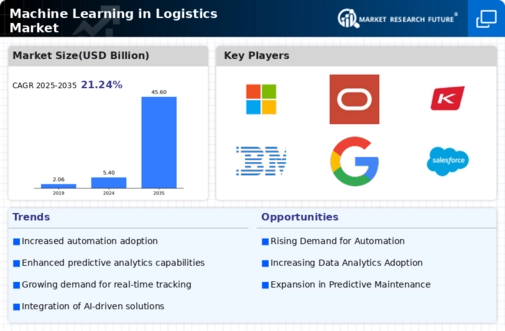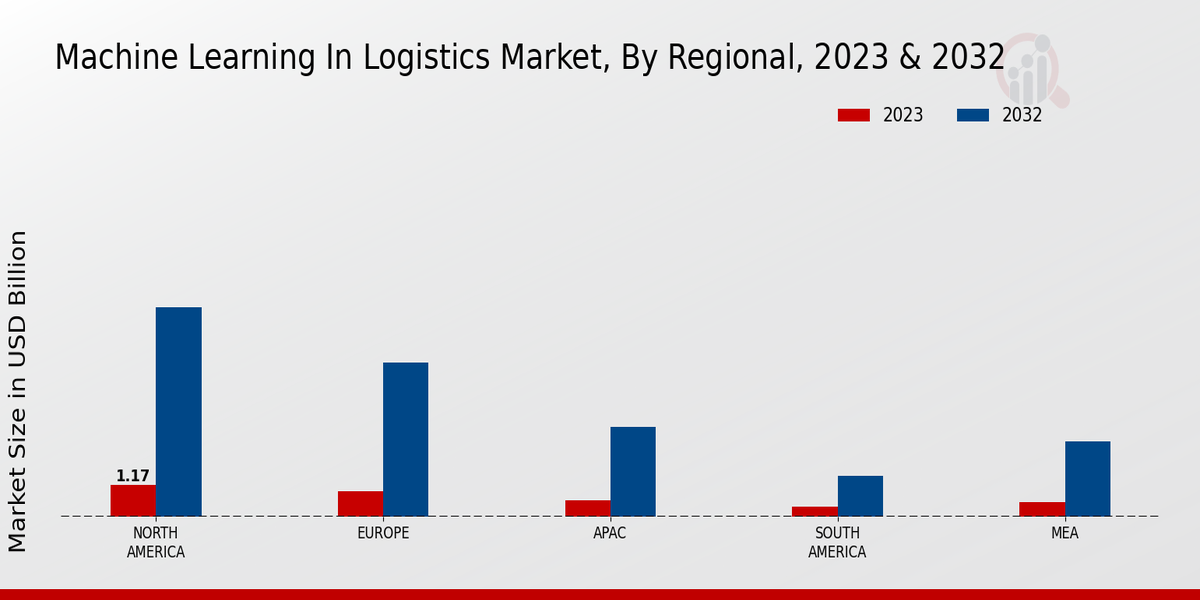Enhanced Supply Chain Visibility
The Machine Learning in Logistics Market is experiencing a surge in demand for enhanced supply chain visibility. Companies are increasingly adopting machine learning algorithms to analyze vast amounts of data from various sources, including IoT devices and sensors. This technology enables real-time tracking of shipments, inventory levels, and delivery times, thereby improving operational efficiency. According to recent data, organizations utilizing machine learning for supply chain visibility report a 20% reduction in delays and a 15% increase in customer satisfaction. As businesses strive to optimize their logistics operations, the integration of machine learning solutions is becoming a critical component in achieving transparency and responsiveness in supply chains.
Cost Reduction through Optimization
Cost reduction remains a primary driver in the Machine Learning in Logistics Market. By leveraging machine learning algorithms, logistics companies can optimize routes, reduce fuel consumption, and minimize labor costs. For instance, predictive analytics can forecast demand patterns, allowing companies to adjust their inventory levels accordingly. This optimization not only leads to significant cost savings but also enhances service delivery. Data indicates that firms implementing machine learning solutions have achieved up to a 30% decrease in operational costs. As competition intensifies, the ability to reduce costs while maintaining service quality is likely to propel further investment in machine learning technologies within the logistics sector.
Increased Demand for Personalization
Personalization is emerging as a key driver in the Machine Learning in Logistics Market. Customers increasingly expect tailored services, and machine learning enables logistics providers to meet these expectations effectively. By analyzing customer data, companies can offer personalized delivery options, optimize packaging, and enhance customer interactions. This trend is supported by data showing that businesses utilizing machine learning for personalization have seen a 40% increase in customer retention rates. As consumer preferences continue to evolve, the ability to deliver personalized logistics solutions will likely become a competitive advantage, further driving the adoption of machine learning technologies.
Improved Decision-Making Capabilities
The Machine Learning in Logistics Market is witnessing a transformation in decision-making processes. Machine learning tools provide logistics managers with actionable insights derived from data analysis, enabling them to make informed decisions swiftly. These tools can identify trends, forecast demand, and assess risks, which are crucial for strategic planning. Companies that have integrated machine learning into their decision-making frameworks report a 25% improvement in operational efficiency. This capability to analyze complex datasets and derive meaningful conclusions is becoming indispensable in a fast-paced logistics environment, where timely and accurate decisions can significantly impact overall performance.
Integration of Autonomous Technologies
The integration of autonomous technologies is significantly influencing the Machine Learning in Logistics Market. As companies explore automation in warehousing and transportation, machine learning plays a pivotal role in enabling these technologies to function effectively. Autonomous vehicles and drones, powered by machine learning algorithms, can optimize delivery routes and enhance operational efficiency. Current estimates suggest that the market for autonomous logistics solutions could reach USD 50 billion by 2027. This integration not only streamlines operations but also addresses labor shortages, making machine learning an essential component in the future of logistics.


















Leave a Comment